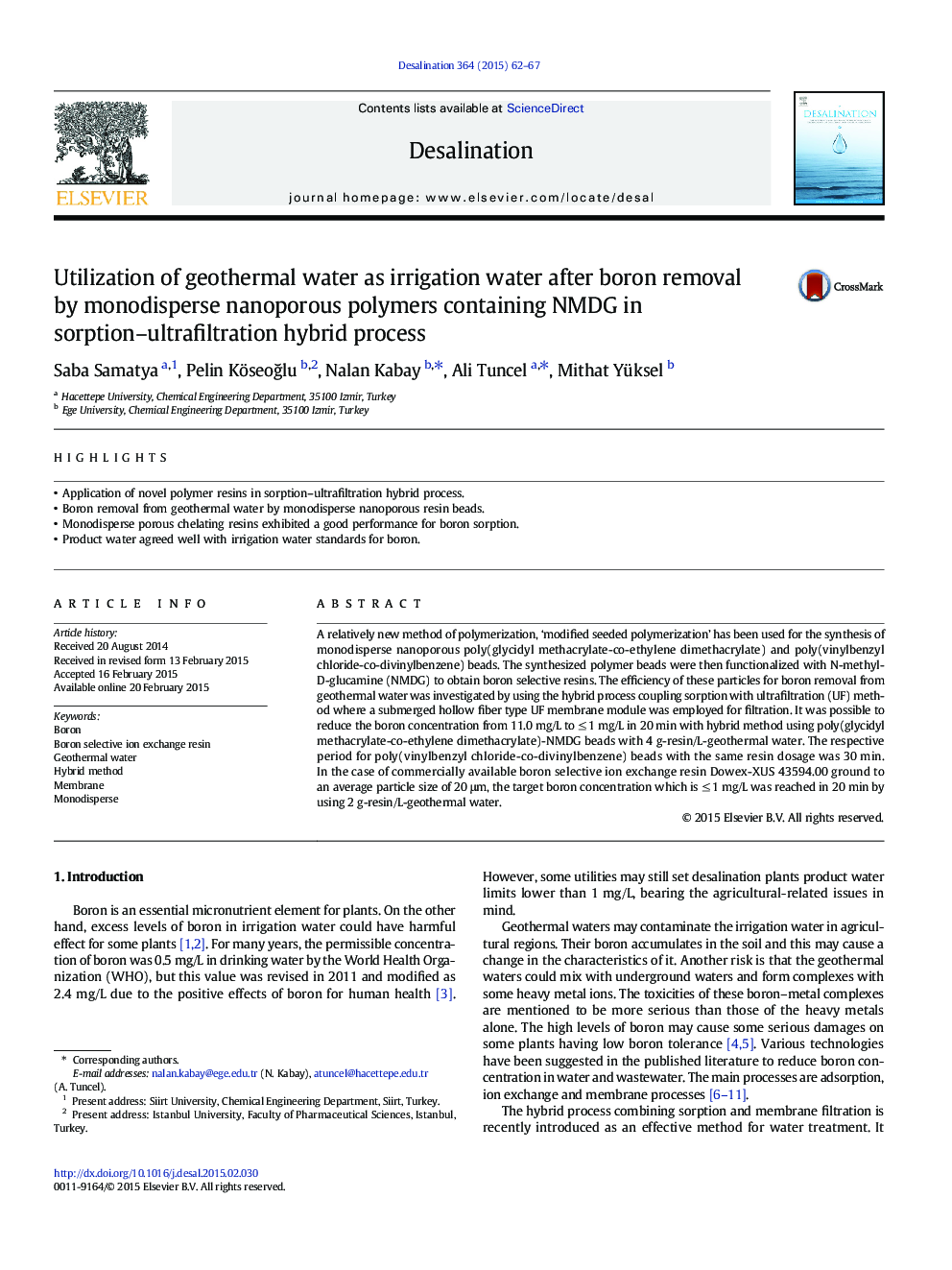| Article ID | Journal | Published Year | Pages | File Type |
|---|---|---|---|---|
| 623135 | Desalination | 2015 | 6 Pages |
Abstract
A relatively new method of polymerization, 'modified seeded polymerization' has been used for the synthesis of monodisperse nanoporous poly(glycidyl methacrylate-co-ethylene dimethacrylate) and poly(vinylbenzyl chloride-co-divinylbenzene) beads. The synthesized polymer beads were then functionalized with N-methyl-D-glucamine (NMDG) to obtain boron selective resins. The efficiency of these particles for boron removal from geothermal water was investigated by using the hybrid process coupling sorption with ultrafiltration (UF) method where a submerged hollow fiber type UF membrane module was employed for filtration. It was possible to reduce the boron concentration from 11.0 mg/L to â¤Â 1 mg/L in 20 min with hybrid method using poly(glycidyl methacrylate-co-ethylene dimethacrylate)-NMDG beads with 4 g-resin/L-geothermal water. The respective period for poly(vinylbenzyl chloride-co-divinylbenzene) beads with the same resin dosage was 30 min. In the case of commercially available boron selective ion exchange resin Dowex-XUS 43594.00 ground to an average particle size of 20 μm, the target boron concentration which is â¤Â 1 mg/L was reached in 20 min by using 2 g-resin/L-geothermal water.
Related Topics
Physical Sciences and Engineering
Chemical Engineering
Filtration and Separation
Authors
Saba Samatya, Pelin KöseoÄlu, Nalan Kabay, Ali Tuncel, Mithat Yüksel,
